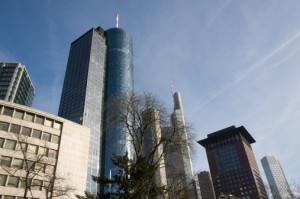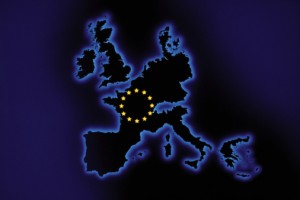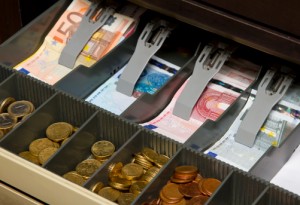European Central Bank
 The European Central Bank, known as the ECB for short, is the central bank of the European Union. Its main function is to keep the markets stable and inflation rates low. Its activities impact the forex trading market, which relies on differences in exchange rates in order to make money.
The European Central Bank, known as the ECB for short, is the central bank of the European Union. Its main function is to keep the markets stable and inflation rates low. Its activities impact the forex trading market, which relies on differences in exchange rates in order to make money.
Role of the European Central Bank
The European Central Bank administers the monetary policies of each of the European Union’s 17 Eurozone member states. Its main purpose is to keep prices stable in the Eurozone, which also means maintaining low inflation rates. This is its single objective, with any other objective less important that that. This is a major way in which it differs from the Federal Reserve in the United States of America.
The role the European Central Bank plays in keeping the European economy stable is an important one. It intervenes whenever there are problems in the markets, lending money to commercial banks using reverse repurchase agreements. This is done against collateral which the back buys back the next day.
The Euro Currency
 The currency used by the ECB is called the Euro. Although there are 27 member states of the European Union, only 17 of these countries use the Euro as their national currency. These are Belgium, Austria, Estonia, Cyprus, France, Finland, Greece, Germany, the Netherlands, Slovenia, Slovakia, Italy, Spain, Ireland, Malta, Luxembourg and Portugal.
The currency used by the ECB is called the Euro. Although there are 27 member states of the European Union, only 17 of these countries use the Euro as their national currency. These are Belgium, Austria, Estonia, Cyprus, France, Finland, Greece, Germany, the Netherlands, Slovenia, Slovakia, Italy, Spain, Ireland, Malta, Luxembourg and Portugal.
The Euro is also used as the national currency for 7 countries outside of the European Union. These are San Marino, Monaco, Clipperton Island, Saint Pierre & Miquelon, Akrotiri & Dhekelia, the Vatican City, and French Southern & Antarctic Lands. Countries unofficially using the Euro are Kosovo, Zimbabwe, Andorra, Mauritius, and Montenegro.
There are also ten EU member states which do not use the Euro as their currency, and these are: the Czech Republic, Bulgaria, Denmark, Latvia, Hungary, Poland, Lithuania, Sweden, the United Kingdom and Romania.
 The Euro coins available are 1c, 2c, 5c, 10c, 20c, 50c, €1 and €2; although there are also some rare Euro coins worth €5 , €10, €20, €100 and €1,000. Notes available are €5, €10, €20, €50, €100, €200 and €500.
The Euro coins available are 1c, 2c, 5c, 10c, 20c, 50c, €1 and €2; although there are also some rare Euro coins worth €5 , €10, €20, €100 and €1,000. Notes available are €5, €10, €20, €50, €100, €200 and €500.
With one single currency across multiple countries, this means that there are fewer currencies to trade between when doing forex trading.
Location of the ECB
The European Central Bank is situated in Frankfurt am Main, which is in the German state of Hesse and is its largest city with a population of 695,624. This location was decided upon as part of the Amsterdam Treaty, with the ECB currently occupying a building called the Eurotower. However, in 1999 a competition was held to find a design for a new building for the bank, which is due for completion in 2014.
History of the ECB and the Euro
The European Central Bank came into existence in 1998 as a follow-on from the European Monetary Institute. The Euro officially began being used as a currency in 1999 and was a follow-on from the European Currency Unit.
News about the European Central Bank
When you are trading Euro pairs, you should make sure to follow the news from the European Central Bank.





